Custom-made insoles are insoles tailored to each patient’s foot to alleviate foot and knee pain. By placing insoles inside shoes, not only the feet but the whole body can benefit in various ways. By evenly distributing the weight on both feet, unnecessary muscle tension is eliminated, helping maintain proper posture.
Humans are naturally able to stand stably by supporting their body on three points: the heels and the base of the big and little toes. When the foot is supported on these three points, the arch of the foot is formed. This vertical and horizontal arch structure absorbs the shock from the ground and reduces the burden on the feet, ankle joints, knee joints, and lower back, acting as an important cushion.
However, if the weight shifts toward one side or if a hunched posture becomes a habit, the body will reflexively try to maintain balance. This causes the muscles in the neck, shoulders, and back to tense up excessively, leading to stiffness, pain, and increased fatigue in the feet.

For example, people with flat feet often walk in a “penguin-like” manner or tend to lean forward when wearing heels, causing the weight to be unevenly distributed and not properly centered on the heels.
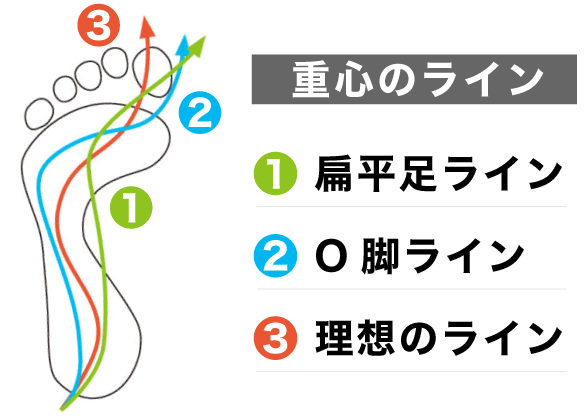
When the heel contacts the ground during walking, the gluteus muscles engage to stabilize the body for the next movement. However, if the weight is not properly placed on the heel, the muscles cannot function effectively, leading to instability in posture and compensation by other muscles.
Continuing with an unbalanced gait, the muscles try to compensate and stabilize the body, and the muscles that should be used are not engaged, causing the body’s balance to deteriorate, resulting in greater strain. Over time, this leads to pain, fatigue, and even the development of calluses, corns, and thickened skin.
The talocrural joint and subtalar joint share ligaments and function as a compound joint mechanism that moves together in a double-joint structure.
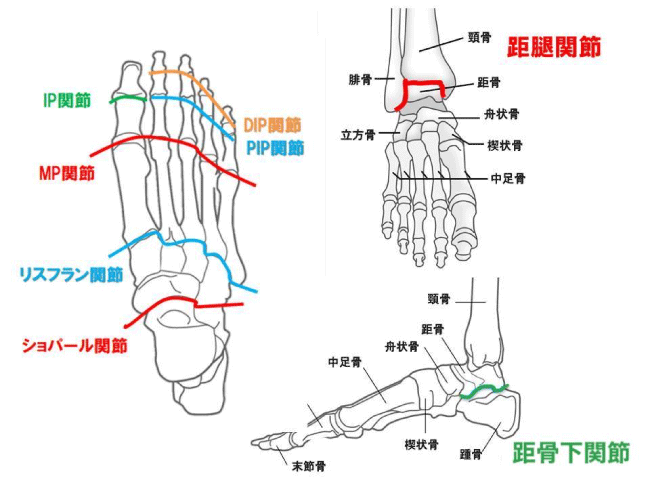

• The tibial side is concave, and the talus side is convex, forming a spiral joint (dovetail structure)…high bone stability
• It is prone to excessive twisting forces during weight shifts (subjected to large loads on a small joint surface)
• Main function: plantar and dorsiflexion of the ankle joint (but can perform a variety of movements due to its complex structure)
• During dorsiflexion: the talus locks into place, stabilizing the joint, while during plantarflexion: the joint allows some play
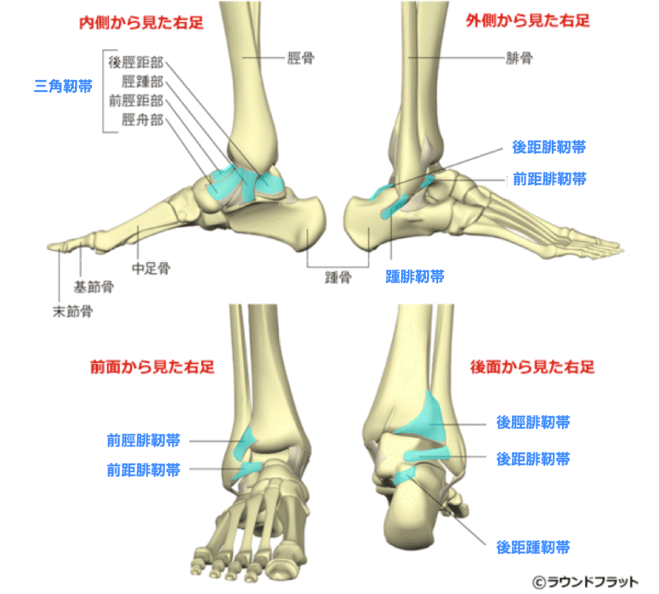
• Many muscles cross over the talocrural joint, making it susceptible to inflammation or sliding restrictions caused by swelling
= Prone to restricted joint mobility and mechanical stress

• Affects the mobility and stability of the Chopart joint
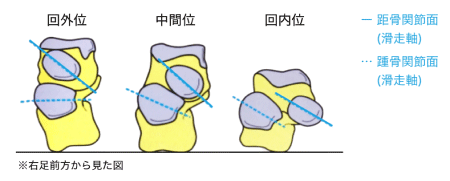

Considering it in relation to walking:
At the end of stance phase, the subtalar joint… pronates (increases foot rigidity and prepares the forefoot for push-off)
At the beginning of stance phase, the foot… supinates (softens the foot, prepares for shock absorption and weight response)
Although the range of motion is small, as a key joint in the foot, it plays a very important role in foot function
The foot’s three rotational axes function to absorb shock during heel strike and enable smooth weight transfer forward, allowing for efficient walking. In order to move forward, the downward body weight needs to be converted into forward motion.
Heel strike to foot flat (rotation around the heel)
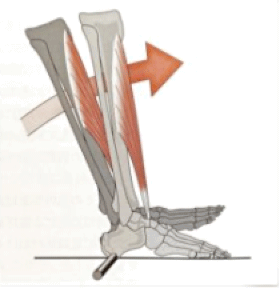
The body rapidly descends to the lowest point, and various muscle groups work to reduce shock from the floor. The spherical shape of the calcaneus allows for rotational movement (only in one direction).
… Heel alignment during heel strike and the strength of ground contact
• Pronation foot: The calcaneus often tilts inward strongly
• Supination foot: The contact between the calcaneus and the floor is strong, with poor shock absorption
Foot flat to just before heel lift (rotation around the ankle joint)
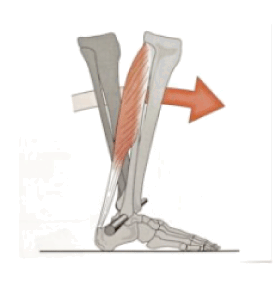
After the mid-stance phase, gravity generates a forward rotating force. The soleus muscle works with the gastrocnemius to control the degree and speed of the lower leg’s forward tilt.
Without this muscle action, walking will become restricted.
… Degree of dorsiflexion of the ankle joint
If dorsiflexion is limited, the lower leg will not tilt forward adequately, resulting in early heel lift or compensatory movements like walking with the feet turned outward.
Heel lift to toe-off (rotation around the MP joints)
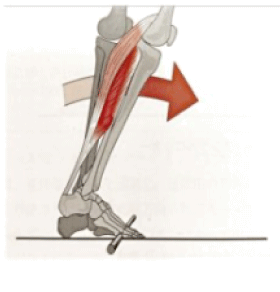
From mid-stance to the heel lift and push-off phase, the body rotates forward while flexing the metatarsal and toes to complete the movement.
… Amount of arch movement and toe movement for pushing off
If the toes or metatarsal arches are too stiff, it will hinder the smoothness of the push-off phase.
© Copyright (C) All Rights Reserved..